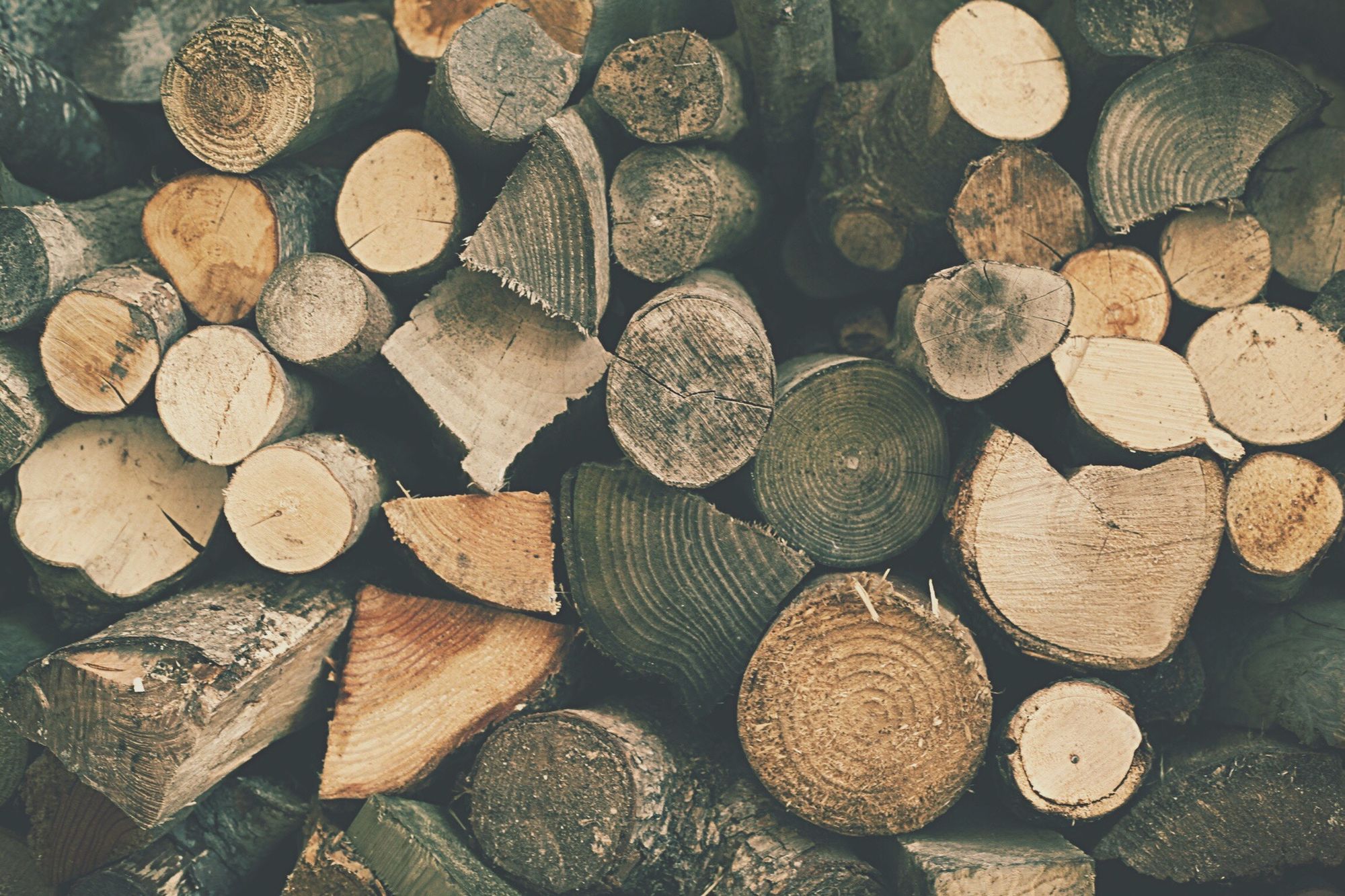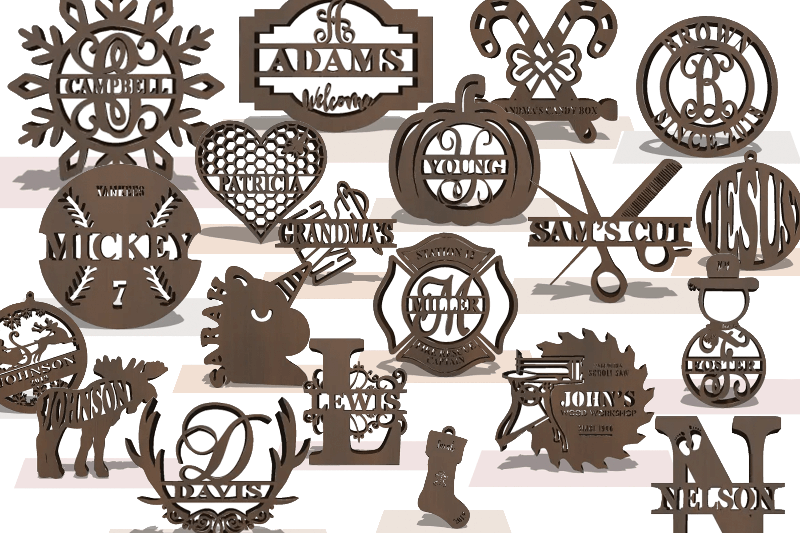Here at Holz Brothers we provide a selection of fantastic, interesting and unique scroll saw patterns for you to choose from... But no matter which pattern you choose for your scroll saw project; the wrong scroll saw wood or material can make or break a good idea. We want our clients to get the most out of scroll saw art, so we put together this guide to selecting materials to work with to help out!
If you have come here for material choices then read on. However, if you are looking for inspiration you may want to browse our exemplary collection of patterns to give you some ideas. Otherwise read on and Helmut can take you through our scroll art material choices. As ever, please join us on Facebook if you have any questions.
Regards,
Hans Holz.
What Makes a Great Scroll Saw Art Material?
A good material is hard wearing but won't break your saw! They can range from every type of wood, to rubber, metals, leathers, even bone! There are different categories of materials and some are safe to use while others are not so safe. As ScrollSaw Workshop superstar Steve Good recommends; a thin material will give you less control; a harder material increases the risk of vibration due to the resistance caused by the hardness. If you choose the wrong material you run the risk of chipping, burning or instability in the wood, all of which will ruin any good scroll art project.
Thickness/Thinness of Material
The thickness needs to be taken into consideration. A scroll saw is an excellent tool for carving or cutting materials that are fairly thin. Most blades can cut through materials up to 2 inches deep – although use caution. A particularly hard 2 inch material will wreck your blade. Thicker woods are often more resistant under your blade and this can lead to problems cutting if you try to go too fast.
As a general rule, a thinner material will have little resistance but this lack makes it more difficult to follow the lines of a pattern. A thicker material will provide more resistance, will be more likely to smoke or burn but will hold a pattern better.
Wood Types: Hard or Soft?
Each has it's merits and each has its flaws. For the most part, softer woods should be chosen to practice with as you get to know your scroll saw. Softer woods will tend to bend more under the blade, will be harder to keep a pattern in and will tend to be a little too flaky for detailed patterns. Hard woods tend to be stronger and more resilient – but this can lead to smoking or chipping if you get the speed wrong. Of all woods, Oak is the hardest to work but is also considered to be the best.
Let's look at some soft and some hard woods in more detail.
Softwoods You Can Use For Scroll Saw Projects
Not all softwoods are completely useless; but you should avoid using pine for any fine work. Cedar and plywoods are recommended as good woods to practice on while some recommend a good quality Baltic birch (Scroll Saw Forums). We actually recommend Poplar as the best practice wood because it has a more even grain than pine, meaning you can cut at an even speed without worrying about changing blades.
As to whether or not you should cut plywood or solid wood: the choice is yours. Plywood has good tensile strength and is very stable, but will eat through your blades a little quicker than a solid soft wood. Solid, natural woods are usually preferred for their beauty and natural grains but, depending on the project, plywood sheets might suit your needs just fine, and make an affordable solution for those working on large scale scroll saw projects.
Hardwoods That Make A Great Scroll Saw Material
Hardwoods are good for keeping the shape of a pattern, for this purpose both Ash and Maple woods are favored. Ash and Maple are not considered best for beginners since they require some degree of skill to cut. Too much speed and both Ash and Maple are likely to vibrate, jump up and down or even smoke. Bring the speed back down and avoid injury.
According to Hunker, Red Oak is another hard wood favorite, as are Walnut and Cherry, which both have lovely grains. However, Sawshub has Birch as a preferred hardwood despite its curly grain and tendency to absorb staining in irregular ways. They also mention Hickory as a cheap hardwood to work with, as well as having one of the best strength-to-weight ratios of all woods.
Finally, Oak is one of the all time greats in terms of scroll saw art – unfortunately it is also one of the hardest woods to work. Consider practicing on off-cuts before you dive straight into cutting a scroll saw pattern in Oak wood.
Polywood Materials – What Exactly Are They?
Polywood has been in use since the 90's although it is a little more advanced than it was back then. Polywood lumber has been specially crafted in a laboratory and is made from High Density Polyethylene, thermoplastics and other (often recycled) plastic materials. This example from POLYWOODS is a typical specimen.
Basically, Polywood is a man made plastic that is cut into blocks or planks much like lumber might be. It is then used in place of timber – and can be cut with your scroll saw provided the sheet is less than 2 inches deep.
Why Use Polywood?
Polywood is incredibly durable. It is weatherproof, waterproof, hard wearing, long-lasting and is arguably more Eco-friendly than using real lumber since it is made from recycled plastics (and can be recycled itself). Polywood is a preferred material for any scroll saw projects which are designed to be kept outdoors.
The benefits of Polywood:
- Hard wearing and long lasting, difficult to scratch.
- Weatherproof and waterproof
- Made from recycled plastics and is recyclable.
- Good resistance, designed to be highly dense and therefore more stable on your cutting table, in much the same way as hardwood might be.
Scroll Saw Art With Non-Wood Materials
Of course, the scroll saw is the best carving tool in any given workshop – so they have been designed to be used with non-wood materials as well. Not every scroll saw is able to cut through every different type of material – and bear in mind that the thickness needs to be less than the 2 inch maximum. If you are unsure of whether or not your machine can handle these non-wood materials then check your instruction manual or contact your manufacturer to avoid breaking anything.
Some Common Types of Non-Wood Scroll Saw Materials
Some of the different things you can cut with your scroll saw include:
- Plastic – not just Polywood but all different types of plastic. Remember that the softer it is the harder it will be to pattern, but stiff plastics should retain shape fairly well and offer decent resistance. Some acceptable plastics include plexiglass (The Woodbox) and acrylic (Overclock).
- Corian – is a heat resistant material that is made of incredibly dense plastic. They look like hard sheets of resin that will offer an even better hardness for cutting on... think of Corian as plastic plus. You can see this article, from the Woodworker's Journal, for tips on cutting it.
- Leather or fabric – fabrics need to be fairly stiff in order for this to work. Anything too delicate will simple fall apart/snag. On the other hand leather lends itself well to scroll saw projects – the key to success here is a sharp, thick blade. You can follow one man's experience here, via the Scrollsaw woodworking forum.
- Veneer – Not a popular choice because it is very resistant. Those who do use veneer tend to favor Oaks or hardwoods to fight back against brittleness.
- Bone – yes, you read that right... bone is a material you can cut or carve with your scroll saw. Some use antlers, some use bone, either will be difficult to cut for the brittleness. They have both hard and soft parts and, by all accounts, they smell terrible while you work them. See this thread on the ScrollSawVillage forum for more information.
Can you Cut Metals With Your Scroll Saw?
Yes you can! Common thin sheets of metal to cut include Aluminum, Brass, Copper, Steel and even old coins! Make sure that any metal you choose is less than 20 gauge or you may just end up damaging your blade. Although Scroll Saw wood is the first choice for most pros that doesn't mean you can't cut metal, too. You need to make sure that your machine is strong enough, in good working order and has the sharpest possible blade before you try... you may also prefer to have a lot of experience with your scroll saw before you try!
Which Material Should I Choose to Cut With My Scroll Saw?
It entirely depends on what project you want to make! If you want to cut intricate patterns for jewelry then metals that won't rust, that look good and that don't tarnish are top choices. If you are a fashion designer making an outfit then leather or dense fabric will work better than wood... If you want to practice until you are perfect try Poplar, then move on to harder woods once you get the hang of things.
Whatever you do, remember that we are here to answer all of your questions. Whether you choose scroll saw wood or work with the finest Oak – we are able to answer all of your scroll saw art and scroll saw pattern queries. Feel free to bookmark our page and return for all the latest hints and tips – or even just join the Holz Brothers facebook group, should you need extra clarification... Maybe we can have Hans cut you a deal!
Regards
Helmut Holz.


